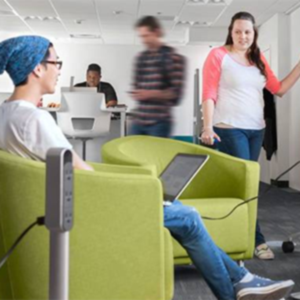
LEARNING LABS
Collaboration Spaces
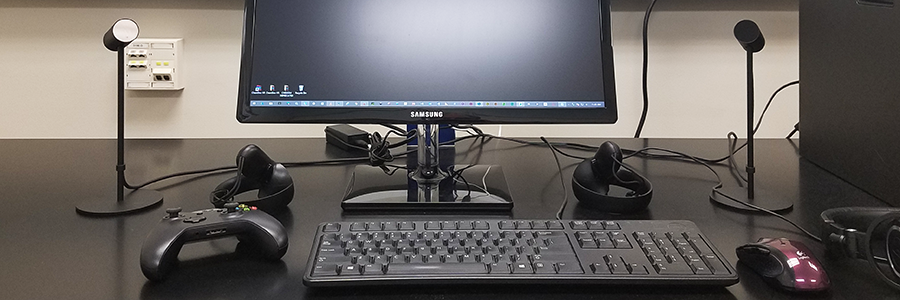
Head tracking in virtual reality is essential to preventing simulator sickness. At the moment, VR headsets by themselves sense yaw, pitch, and roll orientation. Look at a flower in VR while tilting your head from side to side and the flower stays put as expected. But lean your head in toward the flower for a closer look and nothing happens. Without head tracking, the flower remains the same distance from your face. This causes disorientation and disrupts the VR experience.
For head tracking, Oculus Rift, HTC Vive, and PlayStation-VR headsets use external sensors arrayed around a user at distances determined by their designs. Vive trackers are mounted in up to four corners of a room near the ceiling. One or two Rift trackers are typically arranged on a desk or table in front of a seated or standing user as in the image, above. External trackers like these are for outside-in head tracking. With Vive, you can walk around a room as trackers convey your position and posture to a VR application.
If you guessed that inside-out head tracking doesn't use external sensors, then you're right. It relies on sensors within the headset. There are typically two of them working in tandem like stereoscopic eyes to determine the dimensions and distance of objects like furniture and walls. Microsoft's HoloLens headset uses inside-out head tracking. HoloLens is a non-isolating, mixed reality device similar to a VR headset. When activated, HoloLens quickly scans the surroundings comparing what it sees to a recorded model, checking if anything has changed. If so, HoloLens instantly creates a new model of what it sees as the user looks around.
The big advantage to inside-out head tracking is that it can be used anywhere by simply powering up the headset. Outside-in head tracking must be set up and calibrated first. For now, outside-in head tracking has the advantage because the technology is relatively mature and inexpensive. Inside-out head tracking has latency issues that will take time to resolve. Some combination of the two, or an either/or propostion, may be the ultimate solution for virtual reality headset manufacturers.
T.M.Wilcox, March, 2017
Collaboration Spaces
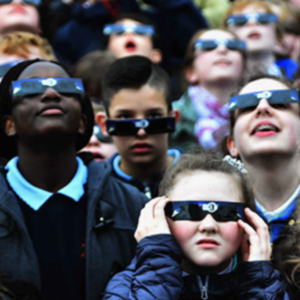
The Ultimate PDA
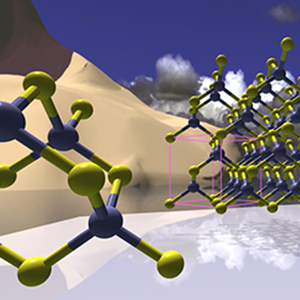
Learning To Code
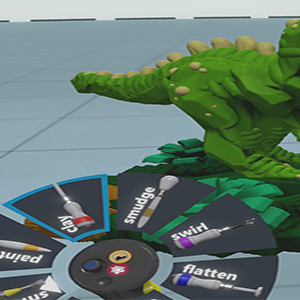
VR Interface Mock-Ups

Amazon's Lumberyard Engine
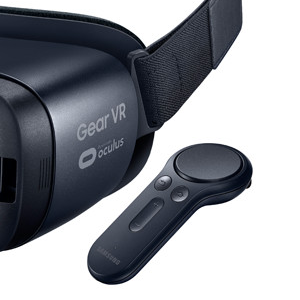
Samsung Gear-VR Controller
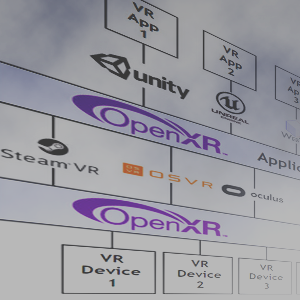
Standards For Virtual Reality
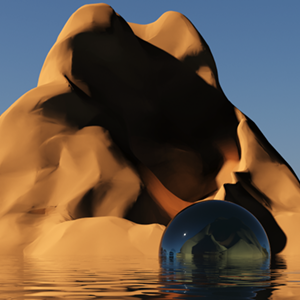
Writing Design Documents
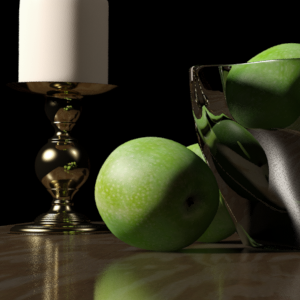
Making 3D Objects for Virtual Reality
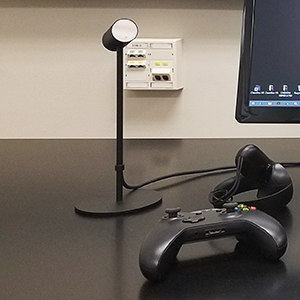
Inside-Out and Outside-In Head Tracking
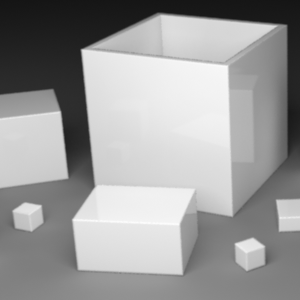
Making a Puzzle App With Unity
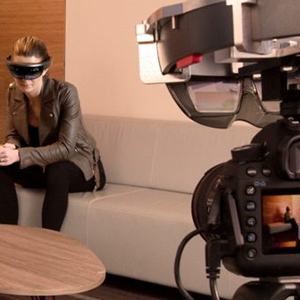
HoloLens Spectator View
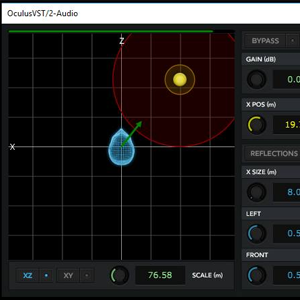
Spatialized Audio For Virtual Reality

Physical Vs. Virtual Campus Expansion
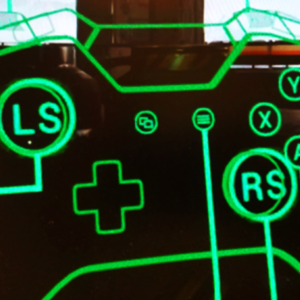
Head-Up GUI Design For VR
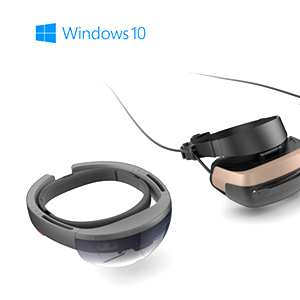
Windows 10 Creators Update
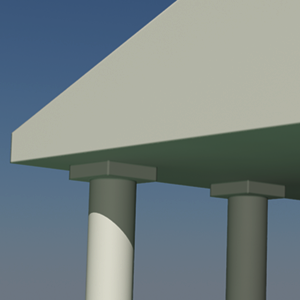
Visualizing Historic Buildings In VR
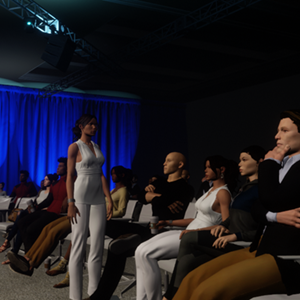
Sansar First Look
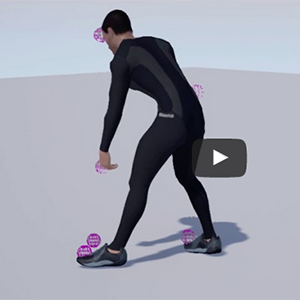
Accurate Motion Capture With Vive Trackers
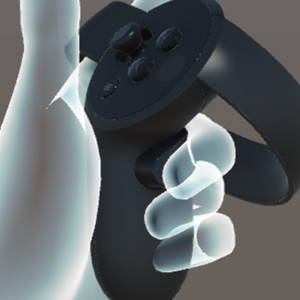
Interface Design For Oculus Touch Controllers